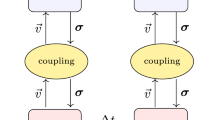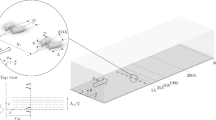Abstract. This paper presents a set of test cases in high speed aerodynamics that describe our perceived relationship between experiment and computation. Computational fluid dynamics, with sensible interpretation, can guide experimental design, so that wind tunnel studies can focus better on fundamental ‘benchmark’ studies. Likewise experimental data may be used as feed back to evaluate codes and to improve their physical modelling. Here we present several test cases, developed in our laboratory, that we regard as basic ‘building blocks’ for high speed aerodynamics. These include: design for boundary-layer/pressure-gradient interaction; cavity flows; shock-wave/boundary-layer interactions; techniques for a graduated and controlled study of three-dimensional separated flows.
Similar content being viewed by others
Author information
Authors and Affiliations
Additional information
Received 10 October 2001/ Accepted 19 November 2002 Published online 4 February 2003
Correspondence to: R. Hillier (r.hillier@ic.ac.uk)
An abridged version of this paper was presented at the 23rd Int. Symposium on Shock Waves at Fort Worth, Texas, from July 22 to 27, 2001
Rights and permissions
About this article
Cite this article
Hillier, R., Boyce, R., Creighton, S. et al. Development of some hypersonic benchmark flows using CFD and experiment. Shock Waves 12, 375–384 (2003). https://doi.org/10.1007/s00193-003-0179-0
Issue Date:
DOI: https://doi.org/10.1007/s00193-003-0179-0




